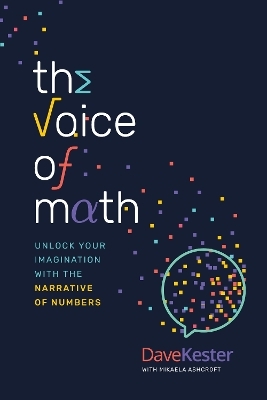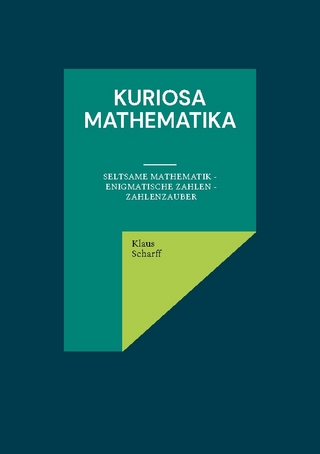
Four-Dimensional Manifolds and Projective Structure
Chapman & Hall/CRC (Verlag)
978-0-367-90042-7 (ISBN)
Four-Dimensional Manifolds and Projective Structure may be considered first as an introduction to differential geometry and, in particular, to 4−dimensional manifolds, and secondly as an introduction to the study of projective structure and projective relatedness in manifolds.
The initial chapters mainly cover the elementary aspects of set theory, linear algebra, topology, Euclidean geometry, manifold theory and differential geometry, including the idea of a metric and a connection on a manifold and the concept of curvature. After this, the author dives deeper into 4-dimensional manifolds and, in particular, the positive definite case for the metric. The book also covers Lorentz signature and neutral signature in detail and introduces, and makes use of, the holonomy group of such a manifold for connections associated with metrics of each of these three possible signatures. A brief interlude on some key aspects of geometrical symmetry precedes a detailed description of projective relatedness, that is, the relationship between two symmetric connections (and between their associated metrics) which give rise to the same geodesic paths.
Features:
Offers a detailed, straightforward discussion of the basic properties of (4-dimensional) manifolds.
Introduces holonomy theory, and makes use of it, in a novel manner.
Suitable for postgraduates and researchers, including master’s and PhD students.
Graham Hall, FRSE is Professor Emeritus in the Institute of Mathematics at the University of Aberdeen, Scotland, UK. He received his PhD from the University of Newcastle upon Tyne in 1971 and came to Aberdeen in 1973. He also served as the Head of department at the University of Aberdeen from 1992 – 1995. His interests lie in classical mathematical relativity theory and differential geometry. He is the author of the text Symmetries and Curvature Structure in General Relativity (World Scientific, 2004) and has contributed to, or edited, several other texts. He has also delivered over 200 invited talks on these topics at many universities and academies in Europe, North and South America, Asia, Africa and Australasia and has published over 180 papers in scientific research journals. Dr Hall is a Fellow of the Royal Society of Edinburgh and of the Royal Astronomical Society and serves on the editorial board of many scientific research journals worldwide.
1. Algebra, Topology and Geometry. 1.1. Notation. 1.2. Groups. 1.3. Vector Spaces and Linear Transformations. 1.4. Dual Spaces and Bilinear Forms. 1.5. Eigen-structure, Jordan Canonical Forms and Segre Types. 1.6. Lie algebras. 1.7. Topology. 1.8. Euclidean Geometry. 2. Manifold Theory. 2.1. Manifolds. 2.2. The Manifold Topology. 2.3. Vectors, Tensors and their Associated Bundles. 2.4. Vector and Tensor Fields. 2.5. Derived Maps and Pullbacks. 2.6. Integral Curves of Vector Fields. 2.7. Submanifolds and Quotient Manifolds. 2.8. Distributions. 2.9. Linear Connections and Curvature. 2.10. Lie Groups and Lie Algebras. 2.11. The Exponential Map for G. 2.12. Covering Manifolds. 2.13. Holonomy Theory. 3. Four-Dimensional Manifolds. 3.1. Metrics on 4-dimensional Manifolds. 3.2. The Connection, the Curvature and Associated Tensors. 3.3. Algebraic Remarks, Bivectors and Duals. 3.4. The Positive Definite Case and Tensor Classification. 3.5. The Curvature and Weyl Conformal Tensor. 3.6. The Lie Algebra o(4). 3.7. The holonomy structure of (M,g). 3.8. Curvature and Metric. 3.9. Sectional Curvature. 3.10. The Ricci Flat Case. 4. Four-Dimensional Lorentz Manifolds. 4.1. Lorentz Tangent Space Geometry. 4.2. Classification of Second Order Tensors. 4.3. Bivectors in Lorentz Signature. 4.4. The Lorentz Algebra o(1,3) and Lorentz Group. 4.5. The Curvature and Weyl Conformal Tensors. 4.6. Curvature Structure. 4.7. Sectional Curvature. 4.8. The Ricci Flat (Vacuum) Case. 5. Four-Dimensional Manifolds of Neutral Signature. 5.1. Neutral Tangent Space Geometry. 5.2. Algebra and Geometry of Bivectors. 5.3. Classification of Symmetric Second Order Tensors. 5.4. Classification of Bivectors. 5.5. The Lie Algebra o(2,2). 5.6. The Curvature Tensor. 5.7. The Weyl Conformal Tensor I. 5.8. The Weyl Conformal Tensor II. 5.9. Curvature Structure. 5.10. Sectional Curvature. 5.11. The Ricci-Flat Case. 5.12. Algebraic Classification Revisited. 6. A Brief Discussion of Geometrical Symmetry. 6.1. Introduction. 6.2. The Lie Derivative. 6.3. Symmetries of the Metric Tensor. 6.4. Affine and Projective Symmetry. 6.5. Orbits and isotropy algebras for K(M). 7. Projective Relatedness. 7.1. Recurrence and Holonomy. 7.2. Projective Relatedness. 7.3. The Sinjukov Transformation. 7.4. Introduction of the Curvature Tensor. 7.5. Einstein Spaces. 7.6. Projective Relatedness and Geometrical Symmetry. 7.7. The 1−form ψ. 7.8. Projective Relatedness in 4-dimensional Manifolds.
| Erscheinungsdatum | 17.07.2023 |
|---|---|
| Sprache | englisch |
| Maße | 156 x 234 mm |
| Gewicht | 690 g |
| Themenwelt | Mathematik / Informatik ► Mathematik ► Arithmetik / Zahlentheorie |
| Mathematik / Informatik ► Mathematik ► Geometrie / Topologie | |
| ISBN-10 | 0-367-90042-4 / 0367900424 |
| ISBN-13 | 978-0-367-90042-7 / 9780367900427 |
| Zustand | Neuware |
| Informationen gemäß Produktsicherheitsverordnung (GPSR) | |
| Haben Sie eine Frage zum Produkt? |
aus dem Bereich


